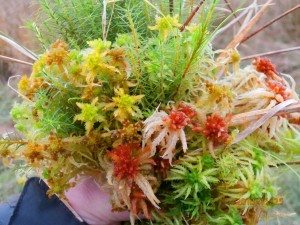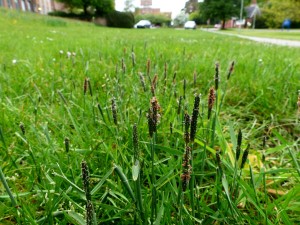Yes, it’s high time for another first from Dr M: a botanical fairy tail!
And why not?
Actually, it’s quite a long tail, so make yourself a cup of tea and settle down all comfy-like…
…and Dr M will begin:
Cast your mind back, it is last summer and you are in an unfamiliar woodland, you’ve been doing some botanising and, having just checked a couple of epiphytic bryophytes on the twisted branch of an old gnarled tree…
What should suddenly appear there in front of you, but an old twisted, gnarled crone (a wicked witch – naturally!).
Well, the aforesaid crone smiles, an old, gnarled, crone-ish smile, and stretches out her twisted, gnarled hand and offers you a Malus pome.
Now there are pomes and there are pomes, and this really is a fine, red, shiny pome, like no other pome you’ve ever seen, let alone dreamed of…
So, suddenly, as if your entire childhood of fairy tales had never happened, you take a hefty great bite, planning to devour it all, pips, core and peduncle, so splendid a pome it is…
But well before you can get even beyond the first bite, you fall into a deep, deep sleep, right there and then! (Frankly, my dear, I have little sympathy, should have seen that coming a mile off).
Anyway, you didn’t and now you’re in a deep, deep sleep.
And the summer passes, autumn begins and ends, and winter, well winter never really happened last year did it, but what passes for winter comes and gestates – languidly – and then the rains come.
And it rains, and rains, and rains, and rains… well you get the idea…
At last, the so-called winter ends and come the spring the rains continue, and the floods and the political debacle and squabble, rage and fury, to dredge or not to dredge, and the press have a field day, albeit a very soggy field, and it lasts way more than a day!
Then one thing leads to another, and the rain stops, at least the extraordinary and unprecedented rains subside, and give way to something a little more normal if you get my drift.
And, as winter subsides, Dr M makes a film (“Sodden Lodden!”) and as spring advances, much of the waters subside and the soggy, sodden, wet, barren ground, gives way to green and luscious vegetation and flowers.
A regrowth, a rebirth, a botanical renaissance which only plants, wonderful, marvellous, glorious, joyous plants are capable.
And still you sleep on…
Now after all this rain, the vegetation has quite grown up all around you, and so lush and verdant is it that you are really a rather concealed, sleeping botanist.
Anyway, clip clop clip clop along comes this handsome prince (or princette, take your pick, this is an interactive fairy story) well actually most likely a spotty young botanist but beggars can’t be choosers (and it’s not a clippety cloppety horse, it’s botanical issue steel toecap boots making all that racket).
Anyway, he/she slashes through the concealing verdure and plants a stonking great smackerooni on your lips and (no surprise here either) you awaken!
Now the important question is (no not the wedding date, neither the guest list, nor the present list, no not the bridal bouquet, now be quiet and focus!).
No, the botanical fairy story is over, done and dusted, now its back to proper botany, and the most important question is how would you, the long-time botanical sleeper who has at long last awoken, how would you know there had been so much rain?
I mean, unbeknown to you, rain has filled every ditch, every floodplain, every reservoir, every river, every well, every field, every aquifer, every bucket, everywhere, but of all of this dramatic hydrological, aquatic activity you were most blissfully unaware.
- Campus grassland January 2014
- The same spot May 2014
You have awoken to grasses green and wonderful, bright flowers and bizzing, buzzing, flitting, flotting insects. How are you to know anything of the superabundance of precipitation that the countryside and half the country’s populace has been through?
Well, being an eXtreme botanist, actually it’s a botanical no-brainer!
You would look around, perchance a frown or frownlette flickering momentarily across your brow, you would study the plantage for a moment or two, and then you would KNOW – it HAS been hellish wet!
And how would you know?
You would know because some plants are just too botanically lippy for their own good, they just can’t keep a secret, not from an eXtreme botanist at any rate!
One such plant (and the clue is in the name) is the Marsh Foxtail, Alopecurus geniculatus. (you see it WAS a Poaceous fairy tail after all!)
So it was while walking across the campus of the University of Reading in early May, Dr M noticed something intriguing and indicative, something growing down in the grass, actually something itself quite grassy!
It was Marsh Foxtail (Alopecurus geniculatus) growing in unusual abundance alongside the more usual lawn grasses such as Rye-grass, Bents, Fescues and Meadow-grasses.
This observation set Dr M thinking, and the above botanical fairy tail scenario came to his (obviously quite fevered) mind!
You see, Marsh Foxtail is not an especially common grass on the campus of the University of Reading, but currently (May 2014) there are conspicuous patches of it here and there.
BUT only in those places which have been waterlogged with standing water for unusually lengthy periods in winter and early spring.
No doubt the balance of competition having been adjusted by the period of inundation, some of the more common lawn grasses have been knocked back in vigour, allowing Marsh Foxtail to flourish.
Marsh Foxtail, in common with other species of the Foxtail (genus Alopecurus), has a cylindrical, spike-like inflorescence, and the grass sheath is somewhat inflated, in addition the shoots are geniculate (i.e. they bend at the knee or genuflect, hence the rather appropriate specific epithet geniculatus!). It is a grass of damp meadows and pastures.
- Alopecurus geniculatus
- Alopecurus genuflecting – bending at the knee!
So, keep your eyes peeled for Marsh Foxtail in periodically flooded grassland and other open, wet places.
To find out more about Alopecurus, and the tribe Aveneae to which it belongs, and about the Poaceae in general, check our Dr M’s Tribes of grasses.
To be sure, as Dr M is won’t to say (and, given half a chance, to sing as well!):
“Poaceae really is a family of grasses green and wonderful!”
Click the link, I dare you!









